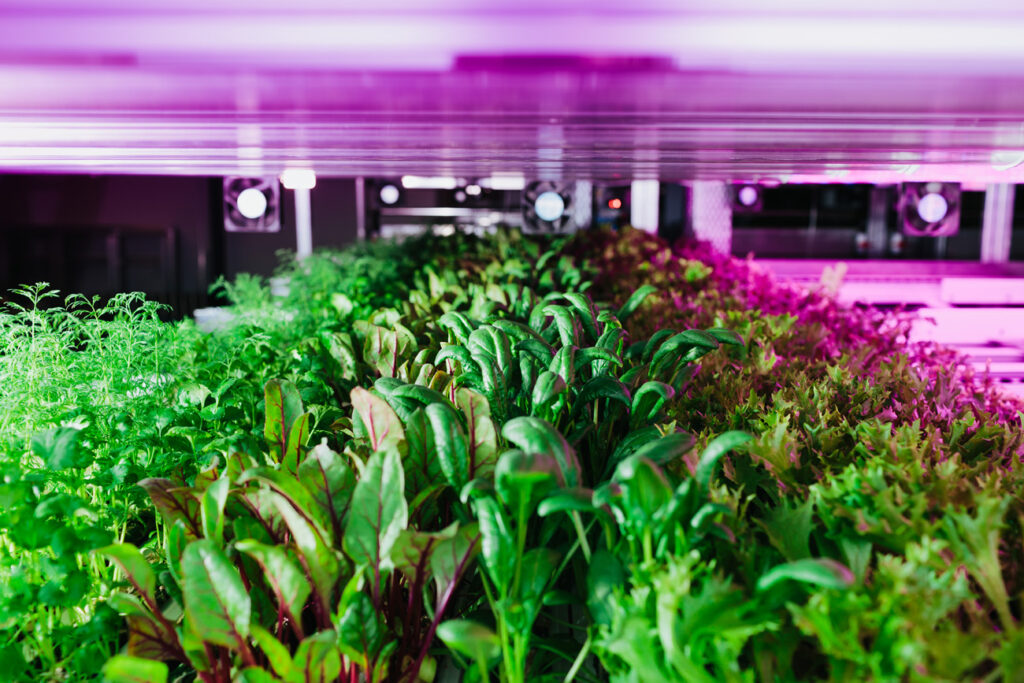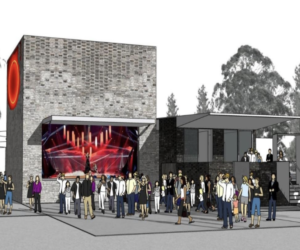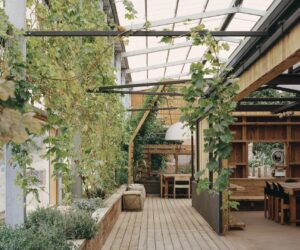Australia’s first fully automated vertical farm completes R&D phase
After four years of research and development, Stacked Farm, the country’s first end-to-end automated indoor vertical farm, is about to deliver leafy greens and herbs to national wholesalers including Sumo Salad, QSR and Morco Fresh – supplying fresh produce to casinos, inflight airline catering and retail outlets.
Vertical farming is the future of urban farming. IKEA recently started to grow lettuce in shipping containers in its stores in Sweden. This urban indoor style of farming uses up to 95 per cent less water than traditional farming, considerably less space, turns produce out about three times as fast and saves on food miles as produce can go from farm to plate in as little as an hour.
Stacked Farm CEO, Conrad Smith says from seedling through to packaging with leading-edge technology, the farm is commercially viable, scalable and competitive. It’s also on the way to becoming the most socially responsible farm on the planet.
“A good crop is not weather dependent and can be grown using up to 95 per cent less water than conventional farming. It eliminates the use of pesticides and other climate related hazardous processes as the growing is fully contained and controlled,” said Mr Smith.
“We also take sustainability very seriously and renewable power is already contributing up to 30 per cent of what it takes to power the farm.”
“Drought has wiped out so many primary producers in the country. Water is always going to be an issue in Australia – it’s our most valuable commodity. Vertical farming can help support our farmers in times of drought or crisis.”
Efficient water usage is just one of the sustainable aspects that makes this operation appealing to food wholesalers in Australia. Produce growth is fast and shelf-life longer, with the entire process from seed to bag taking only 16–21 days.
“Produce life is increased due to the controlled growing environment, the technology and the fact it’s packed within seconds of harvest and there’s no need to wash it – which can be a big degrader of product quality,” said Mr Smith.
“It’s great for growing in the city, as we can deliver within kilometres of the produce being grown, not like most farms who rely heavily on lengthy transport distances.”
This advantage has seen vertical, indoor farming take off in high-density urban areas in the United States, Japan and Singapore making it ideal for farming into the future.
While the current facility can produce a couple of tons of produce a week – equating to a 20–acre farm in output – Mr Smith doesn’t see this as working against traditional agriculture, rather as a means to complement it.
“It’s a game-changer for the cattle industry. We have identified that we can grow livestock feed en masse very quickly, and again using up to 95 per cent less water. A 1000-square-metre vertical farm will have enough output to feed hundreds of cattle daily.”
“The impact that this could have on farming communities that are suffering through drought is enormous.”
While the production is currently focused on leafy greens, herbs and livestock feed, Stacked Farm is also working with the CSIRO to develop additional products suited for indoor vertical farm growth.
Discussions are also underway with property owners in Victoria and Queensland to build farms suitable for produce growing, as well as a major farming operator in NSW to grow livestock feed.
For more information visit stackedfarm.com



